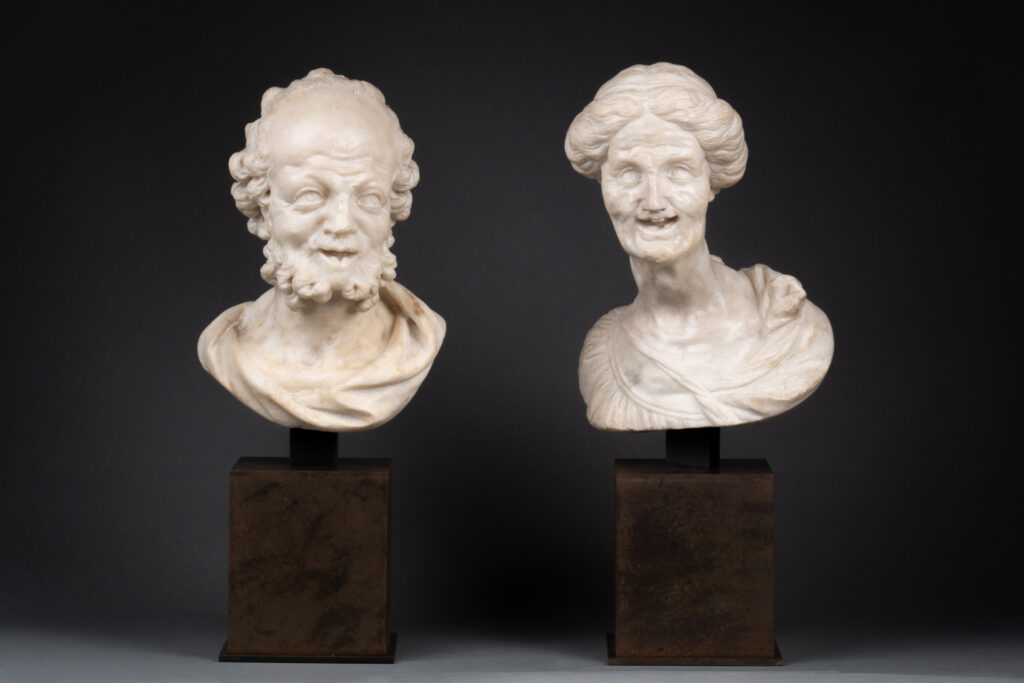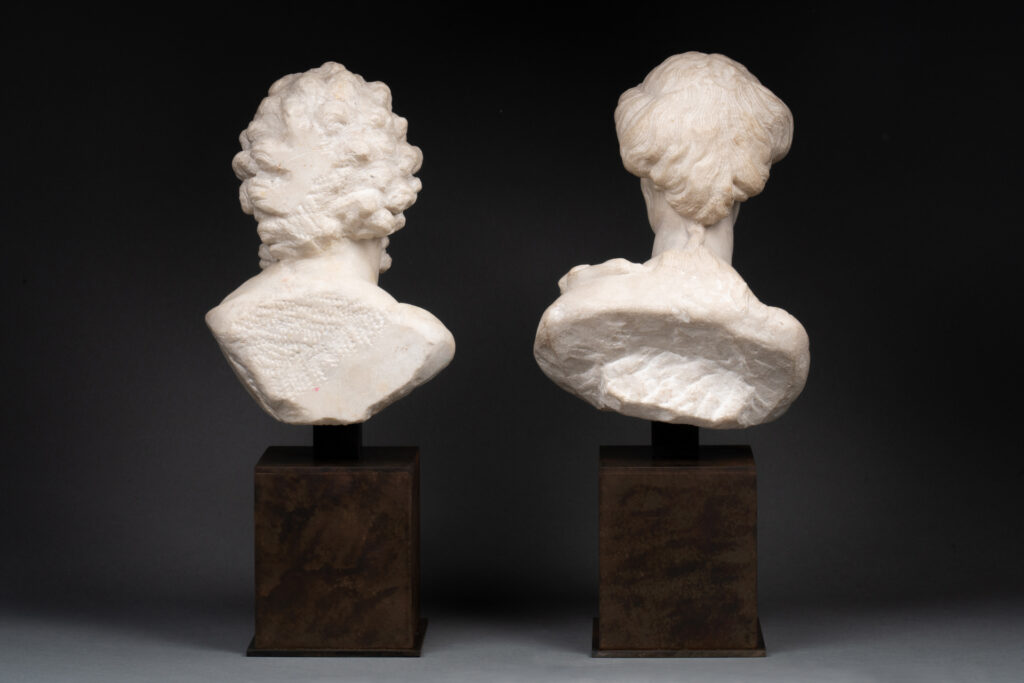This beautiful pair of busts represents two people of advanced age. Made in marble, we can attribute them to the sculptor famous for his allegorical representations: Orazio Marinali and his workshop.
Born in 1643, he was one of the most famous Venetian sculptors of the 17th century. Through his work, he sought to respond to the injunctions of the idealized mannerism of the late Renaissance. That’s why his sculptures are so realistic, where the expression of his characters is brought to its peak.
The elegant woman is wearing a headband that holds her hair back, but a thin strand of hair stands out from her headdress and falls delicately down her neck, adding a touch of realism to the overall effect. In this way, we can even better admire the work done on the folds of the model’s face. His cheekbones are prominent, his eyes bright, and his deliberately somewhat toothless smile forms a coherent whole with the other bust.
It may evoke the allegory of Prudence, characterized on the one hand by her great age and on the other by her keen eye for the slightest danger, a quality she has only been able to acquire thanks to her seniority. The artist’s treatment of old age is a positive one.
The man could be a philosopher or a scholar – his broad forehead suggests otherwise. Indeed, in those days, philosophers were always depicted in this way, as a symbol of their wisdom. The hair at the back is unfinished, as if the artist knew that his work would be placed against a wall to adorn a living room and that this part would therefore not be visible.
Even so, the treatment of hair and beard is quite remarkable. The technique employed to achieve this result is the use of a drill bit, a kind of drill that is operated by hand with a bow. This tool has been used since Antiquity to reach recesses, clear parts that are difficult to access and rough out small diameter grooves by forming cylindrical cavities. Slow but precise, the drill bit is intended for very fragile places and hard materials such as wood, stone and marble. The trephine technique brings movement and depth to the whole.
The laughing man can be likened to Democritus, the Greek philosopher whose characteristic was to be always amused by human stupidity, which he was able to do by taking a step back thanks to his great age.
We can also ask whether the artist’s intention in these works was to show a kind of allegory of the passage of time through the old age of these two characters. Indeed, representing old age in sculpture is not a classic topos, but it does break with the codes of the time to show realism in favor of Beauty. The artist has deliberately accentuated the features of the faces to make the characters almost repulsive. Despite the initial feeling of incomprehension, the viewer is quickly taken with this smiling couple. We can sense a certain dramatization in their facial expressions, typical of Baroque sculpture.
Franz Kafta, an Austro-Hungarian writer, rightly said that “Happiness suppresses old age”.



